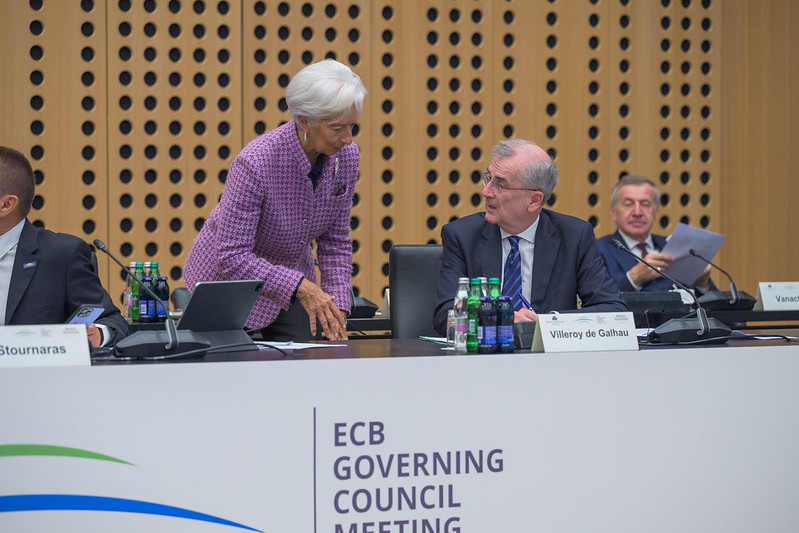ECB’s Villeroy: Moves in Next Six Months ‘Could Be More in the Direction of Accommodation’
19 June 2025

By Marta Vilar – MADRID (Econostream) – European Central Bank Governing Council member François Villeroy de Galhau said on Thursday that if the ECB moved again in the second half of 2025, it could be to cut interest rates again.
In a speech at the EMU Lab in Florence, Italy, Villeroy, who heads the Banque de France, said that ‘barring a major exogenous shock, including possible new military developments in the Middle East, if monetary policy were to move in the next six months, it could be more in the direction of accommodation.’
Inflation had ‘successfully’ returned to 2%, according to Villeroy, who described this as ‘excellent news’.
The euro area was now ‘in a good position’, given the May inflation reading for the Eurozone and the inflation forecast for 2025.
‘Our latest projections show that we shouldn’t fear in Europe, contrary to the US, an inflationary effect of tariffs’, he said.
Despite the fact that returning to a situation in which rates and inflation are both at 2% ‘feels like back to normal’, it did not ‘necessarily mean an end to the journey’, he said.
The ECB would monitor the potential effects of energy price movements on inflation and, were these to have a longer-term impact, the ECB would adapt its monetary policy stance with no automatic reaction, he said.
‘More frequent supply shocks will not mean per se higher inflation, but very probably a more volatile inflation, which could weaken the anchoring of inflation expectations’, he said.
The ECB had now entered ‘a territory close to the neutral stance’, according to Villeroy.
In the event of inflation volatility, being agile did not mean rushing towards the 2% target, he said.
‘We have a medium-term orientation around our symmetric objective, which implies we do not have to respond to deviations from target at one point in time’, he added.
Villeroy argued for a communication strategy halfway between forward guidance and no guidance, focussed on ‘the central bank reaction function’.
‘We need to clearly state not what we will do, but how we think and will act, in a “readable” way’, he said.
Given that inflation was now back at target and inflation expectations were well anchored, the ECB should put more weight on the criteria about the inflation outlook, he said.
The euro appreciation was disinflationary, according to Villeroy, who said that a 10% increase in the exchange rate would largely compensate the inflationary impact of a €10 increase of the oil price, ‘which we are still quite far from as of today.’
The projected decline of inflation in 2026 was to be driven by all the main components of inflation - not just energy - and the return to 2% in 2027 was to be triggered in part by the new Emissions Trading System, he said.
‘In such a context, we need to remain alert and agile, in all our next meetings’, he said.
Related articles:
· ECB’s Villeroy: ‘We Should be Agile and Pragmatic’, No Pre-Determined Path
· ECB’s Villeroy: Next Rate Steps Will Depend on Inflation, My Position Not ‘Set in Stone in Advance’
· ECB’s Villeroy: This ‘Favourable’ Interest-Rate Zone Does Not Mean Being ‘Static’
